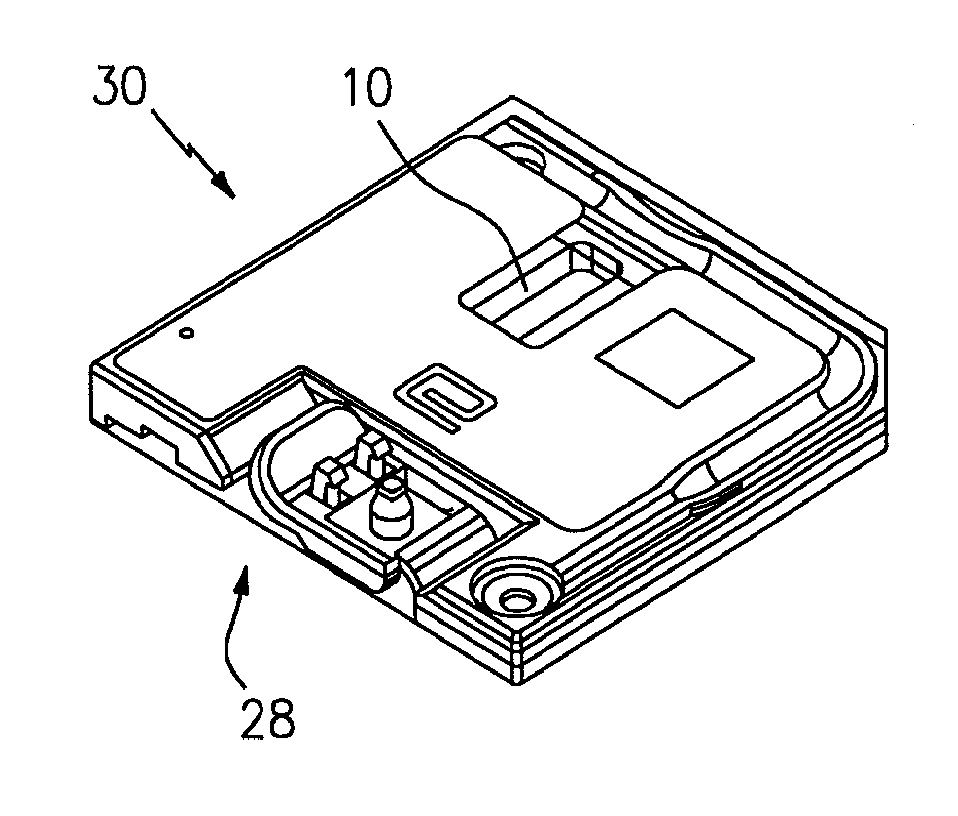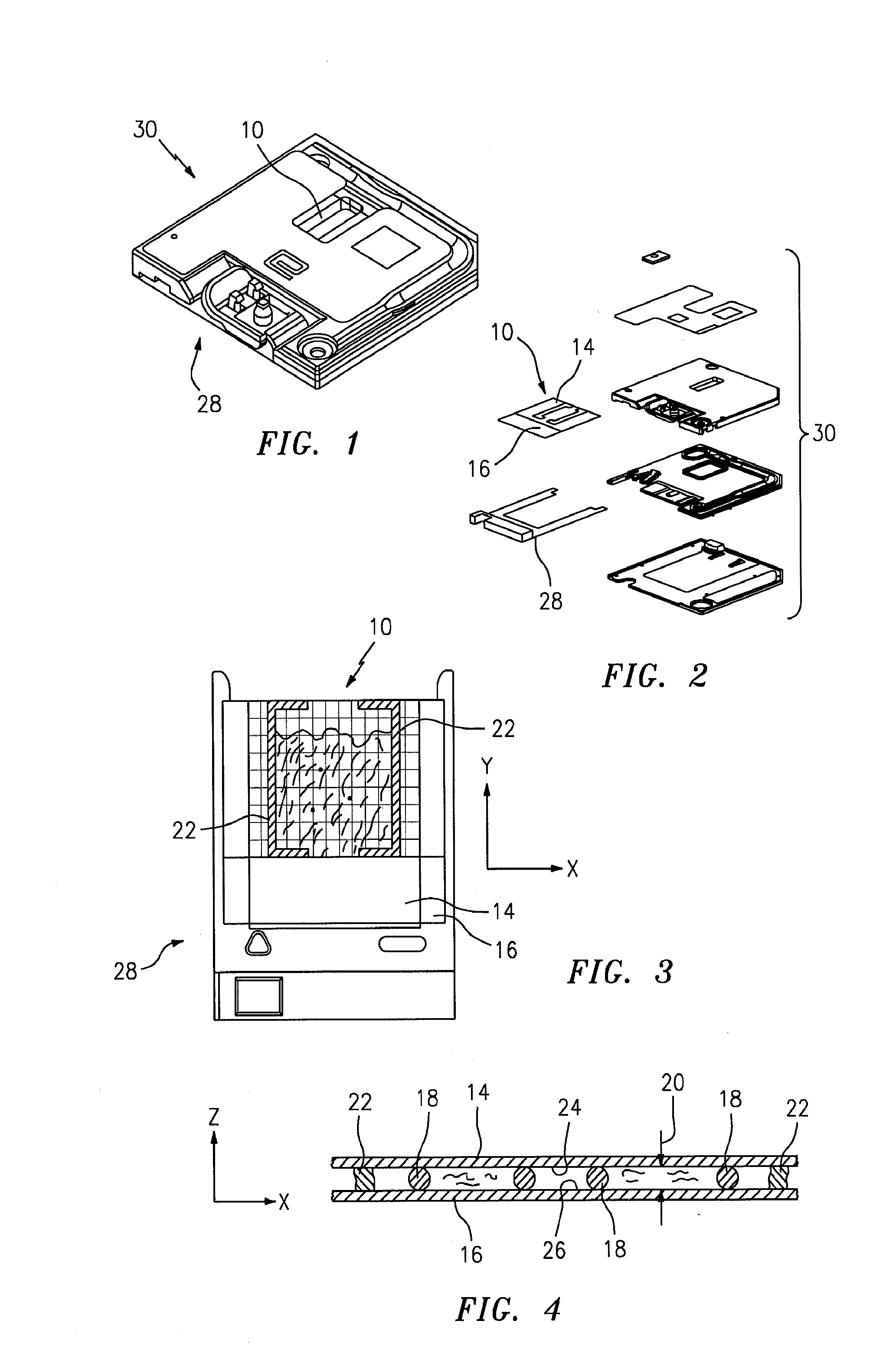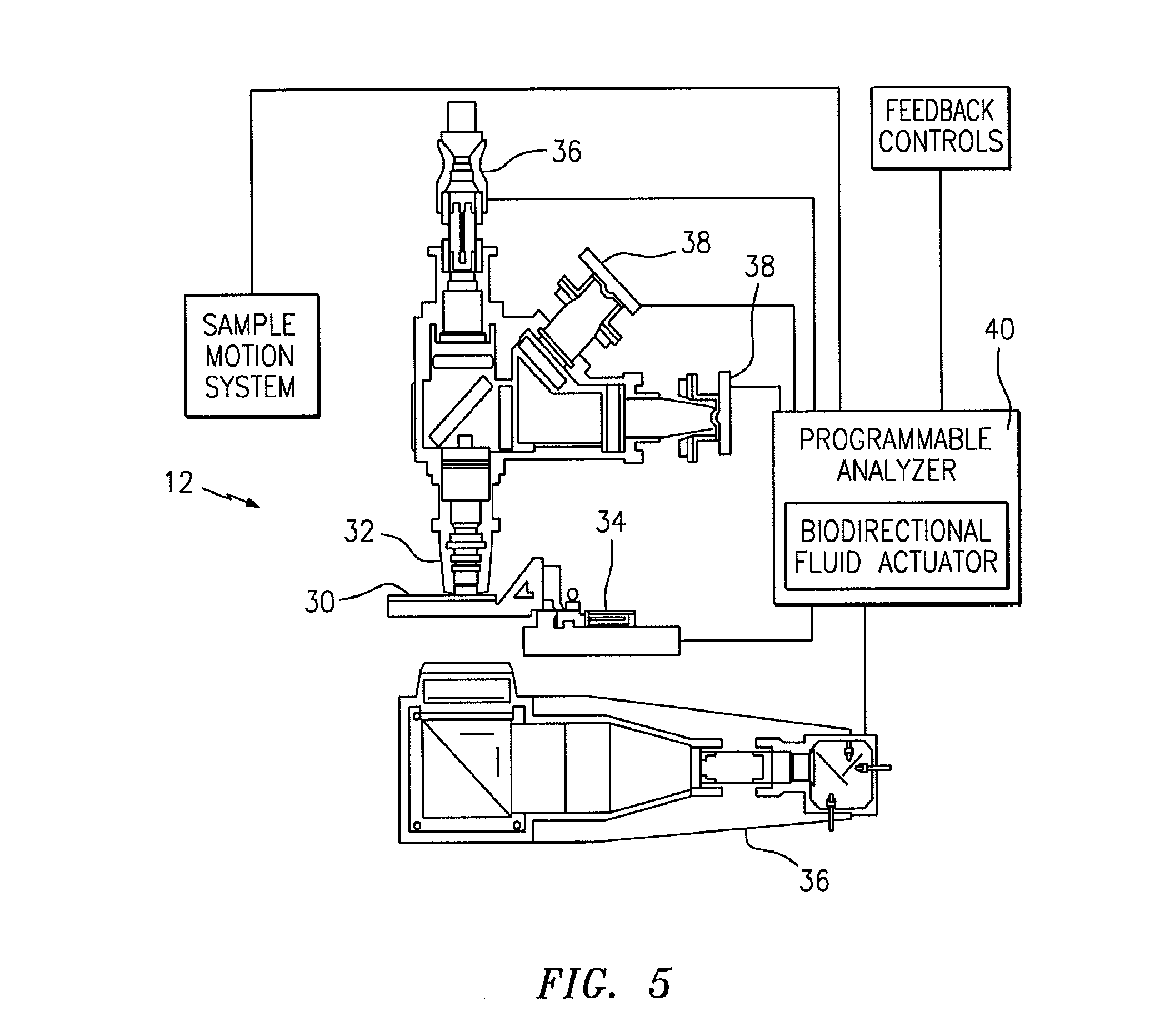Method for imaging biologic fluid samples using a predetermined distribution
a technology of biologic fluid and distribution, applied in the field of methods for imaging a biologic fluid sample, can solve the problems of high resolution imaging speed, labor-intensive techniques, and inapplicability to commercial laboratory applications, and achieve the effects of reducing the cost of high-resolution imaging
- Summary
- Abstract
- Description
- Claims
- Application Information
AI Technical Summary
Benefits of technology
Problems solved by technology
Method used
Image
Examples
Embodiment Construction
[0018]Referring to FIGS. 1 and 5, the present invention includes a method and an apparatus for an automated analysis of a biological fluid sample (e.g., whole blood) by an analysis device 12. The sample deposited in or disposed on a chamber 10 is imaged, and the image of the sample is analyzed using the analysis device 12.
[0019]An example of a chamber 10 that can be used with the present invention is shown in FIGS. 1-4. The chamber 10 is formed by a first planar member 14, a second planar member 16, and typically has at least three separators 18 disposed between the planar members 14,16. At least one of the planar members 14,16 is transparent. The height 20 of the chamber 10 is typically such that sample residing within the chamber 10 will travel laterally within the chamber 10 via capillary forces. FIG. 4 shows a cross-section of the chamber 10, including the height 18 of the chamber 10 (e.g., Z-axis). FIG. 3 shows a top planar view of the chamber 10, illustrating the area of the c...
PUM
| Property | Measurement | Unit |
|---|---|---|
| volume capacity | aaaaa | aaaaa |
| height | aaaaa | aaaaa |
| height | aaaaa | aaaaa |
Abstract
Description
Claims
Application Information
 Login to View More
Login to View More - R&D
- Intellectual Property
- Life Sciences
- Materials
- Tech Scout
- Unparalleled Data Quality
- Higher Quality Content
- 60% Fewer Hallucinations
Browse by: Latest US Patents, China's latest patents, Technical Efficacy Thesaurus, Application Domain, Technology Topic, Popular Technical Reports.
© 2025 PatSnap. All rights reserved.Legal|Privacy policy|Modern Slavery Act Transparency Statement|Sitemap|About US| Contact US: help@patsnap.com



